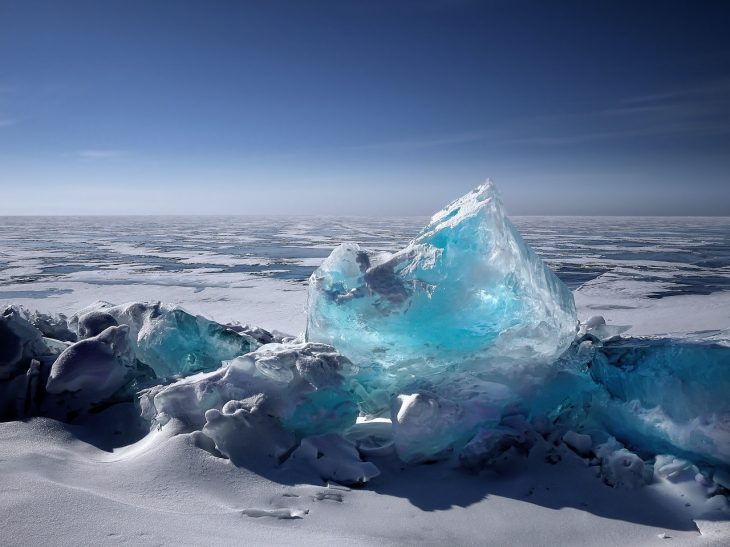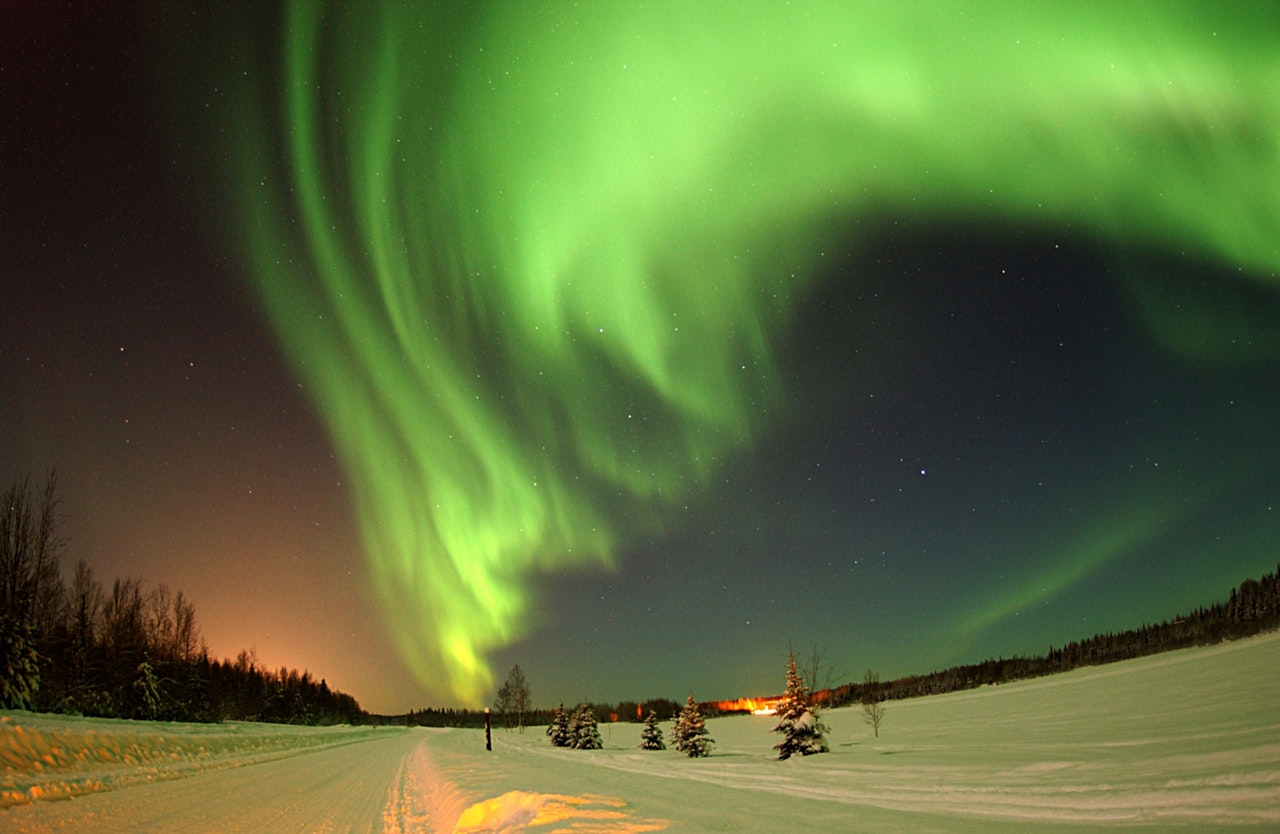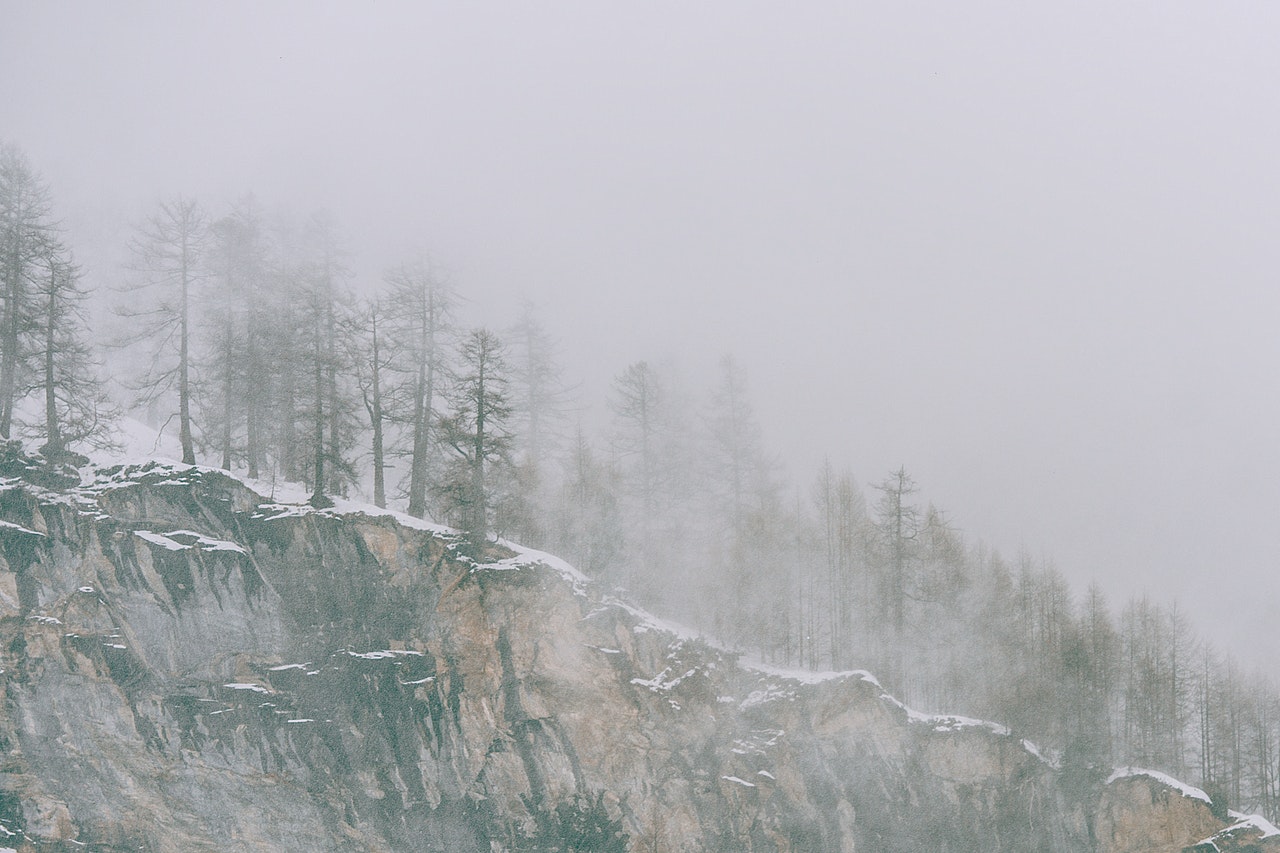
Mention the North Pole and most people would immediately think of Santa, but there are other North Pole facts as interesting as Father Christmas! Did you know that the North Pole is not part of any nation on our planet? And that there is a North Pole marathon every year?
Ever since it was discovered in 1909, there have been a lot of rumors about the North Pole. Some of them are totally false, while others have a grain of truth in them. That said, we hope our collection of chilly North Pole facts help you decipher fact from fiction. On that note, what we know for sure is that for centuries, scientists have often been interested in studying the North Pole to discover more about how climate and weather are constantly changing in our planet. By doing so, it allows us to understand how this affects the different regions of the world and the people living in it.
Thanks to the wonders of technology, we can keep track of all the changes wherever we may be. Have we got you curious now? Learn more about the history and importance of the North Pole by checking out our North Pole facts below.
- The North Pole has a geodetic latitude of 90 degrees North.
- The closest piece of land to the North Pole is 700 km away from the coast of Greenland.
- The North Pole has a sea depth measured at 4,261 meters deep in 1958.
- The world’s first North Pole ice station was established in May 1937.
- Longitude can not determine the local time at the North Pole.
- The North Pole marks the point of the Earth’s axis of rotation and its surface.
- We also refer this location to as the True North Pole or the Geographical North Pole.
- The North Pole is a location not to be confused by the magnetic North Pole.
- They also know this location as the northernmost point of the planet Earth.
- All directions point to the south at the North Pole.
- The North Pole is also at the center of the Northern Hemisphere.
- At the North Pole, counterclockwise points east and clockwise point west.
- Robert Peary is considered as the first man that physically reached the North Pole.
- The sun at the North Pole is constantly above the horizon during the summer.
- During the winter, the sun is constantly below the horizon at the North Pole.
- The North Pole is in the middle of the Arctic Ocean.
- Some studies state that there could be periods during the year where the North Pole is free of ice.
- Attempts in trying to physically reach the North Pole first began in the late 19th century.
- People believe the position of the North Pole was a fixed position until the 18th century.
- In the 16th century, several people believed that the North Pole was in the sea.
Under international law, there is currently no country that owns the North Pole.
According to international laws, no country owns the North Pole and also the Arctic Ocean surrounding its vicinity. They also restrict the five adjacent countries near the North Pole to a 200 nautical mile exclusive economic zone from their coasts. These five countries are Canada, Russia, Norway, Greenland (specifically Denmark), and also the United States which all agree that they call all parts of the Arctic seas the national waters within their respective distances.
In the past, however, several countries once attempted to take claim to the territory of the North Pole before the unified implementations of this international law.
The ice found at the North Pole is typically around 2 to 3 meters thick.
Scientists state that the water found at the North Pole becomes covered and surrounded with ice during all times of the year. The ice found here forms around 2 to 3 meters thick.
According to researchers, the ice in the Arctic Ocean is continuously melting over the years because of the effects of global warming. Because of this phenomenon, scientists predict that the North Pole may be free of ice during summer within the next 50 years. The area of the ice in the Arctic Ocean measures between 9 to 12 million square kilometers. This excludes the ice sheet in Greenland.
The ice at the North Pole melt due to global warming.
According to recent studies, signs of global warming are causing the melting of the ice found at the North Pole. This melting point shows that the ice reflects the sunlight and becomes absorbed by the water. Because of this phenomenon, the Earth also gradually becomes warmer. As a result, the melting ice gradually affects our different environments and also those who live in them.
Multiple studies predict that by the year 2035, summers experienced in the northernmost sea are most likely to cause the North Pole to lose its ice sheet entirely. When this happens, both the ocean temperatures and levels will rise, which can cause flooding and also increase the salinity of aquifers and wetlands.
No one can live at the North Pole and survive.
If you want to live there, here are the North Pole facts you need to know. Because of the extreme weather at the North Pole, we consider humans physically incapable of safely living there permanently.
However, some people live in the nearby Arctic regions close to countries such as Canada, Greenland, and also Russia. We also consider it impossible for there to be a permanent residence at the North Pole. This is because of the constantly moving ice sheet. The North Pole also lacks any kind of natural land bridges that connect it to the other continents, which causes it to become secluded from the rest of the world.

The Arctic Ocean is approximately 13,400 feet deep.
How deep is the Arctic Ocean? Imagine 10 Empire State Buildings stacked on top of each other and you’ll get the answer. The surface temperature of the ocean and its salinity vary depending on the time of the year. It also varies depending on the season as the ice that surrounds it constantly freezes over and melts repeatedly.
Studies have shown that the Arctic Ocean possesses the lowest levels of salinity average among the five major oceans of the planet. This is because of the low evaporation rates that the region experiences.
We find the North Pole to be substantially warmer than the South Pole.
Scientists believe that this is because of the North Pole remaining at sea level in the middle of the ocean rather than at an altitude over a landmass. Because of the leveled area of the North Pole, it results as a better reservoir for heat compared to the South Pole.
The South Pole also has a land of mass that surrounds it — Antarctica. But unlike the South Pole, the North Pole has a sheet of ice from the Arctic Ocean that surrounds it. On average, they consider the month of July as the warmest month experienced at the North Pole with an average temperature of 73°F.
The North Pole has no permanent land.
Unlike the South Pole, the North Pole has no physical or permanent landform at its location. The North Pole has a sheet of ice that forms over the Arctic Ocean. However, over the years, the ice sheet that surrounds the North Pole continues to decrease significantly which leads to several world climate issues.
Despite this, scientists have discovered a few Arctic life forms such as predators roaming around the area while hunting or traveling from one place to another. Some of these findings also include common Arctic and animals such as bears, sharks, and whales.
You can pay to take a vacation at the North Pole.
Several travel companies offer cruise packages to the Arctic. These cruises can cost as low as $3,000 and as high as over $50,000. The only possible way to reach the North Pole is by ship from June to July, when the weather is at its warmest in that area.
During other months of the year, visiting the North Pole will require travelers to take a plane or helicopter to reach their destination. They also need the guidance of trained professionals to come with them. Due to how unstable the ice sheet at the North Pole is, prolonged amounts of time spent at its location can be dangerous.
Tracks of polar bears have been spotted around the vicinity of the North Pole before.
Polar bears live in the Arctic region close to the North Pole. Many scientists consider them as the only animals that live there on the ice sheet. Studies have also shown that these creatures constantly move around, much like the sheet of ice that surrounds the Arctic. They do this to continue having access to the only solid surfaces found around the area.
Researchers believe the Arctic contains around 22 to 31 thousand polar bears. However, some population groups show recent signs of decline over the years along with the melting ice. Currently, scientists consider these animals as vulnerable species. They could also become labeled as endangered if their population decreases drastically over the next few years.
There have also been sightings of small schools of fish around the waters of the North Pole.
A recent census has shown that there could be approximately 240 fish species that live in the Arctic Ocean. The fish population commonly found in these waters includes sailfishes, codfishes, eelpouts, and sculpins. Unlike other regions of the planet, the Arctic rarely experiences commercial fishing activity.
This area could provide an abundance of fishes and marine mammals. Studies have also found that the fish that occupy the Arctic Ocean are from the central marine food web. Scientists state it converts the planktons in this into usable energy for its predators. These predators include animals such as seals and polar bears and are valuable to the oceanic ecosystem.

Each year, there is a North Pole marathon being held.
The North Pole Marathon is an annual race that was first established in 2003. Both men and women from all over the world take part in the competitions in long-distance runs. They run the race over a small 4.22 km loop located over the snow or ice of the Arctic Ocean. Here, many individuals may opt to run the full course or simply half the distance of the marathon.
The Guinness Book Of World Records describes the North Pole Marathon as the northernmost marathon on Earth. Apart from the North Pole Marathon, this is also a South Pole Marathon. This marathon allowed competitors to complete a marathon on all seven continents of the world.
Canada once tried to claim a partial sector of the North Pole in 1907.
Canada once invoked a sector principle over the North Pole to claim sovereignty over the part of its coast that leads to the North Pole. Since then, Canada hasn’t relinquished its claim and became consistently pressed until the year 2013.
Today, all countries that are near the Arctic Ocean follow an international law that states that no country can take sovereignty over the area of the North Pole. Because of this, there can also be no person who can classify as Arctic nationality.
Shipping companies could also consider the North Pole as a cost-effective shipping route.
Theoretically, shipping companies could save roughly around half a million USD by taking the Northern Sea route when going from Asia to North America. Compared to taking the Panama Canal as a shipping route, companies could shorten both costs and travel time for shipments if this route had no repercussions.
However, because of the Arctic Ocean being covered in a sheet of ice, travel between the two continents proved too difficult as a route. Instead, it is now more common to take oceanic routes that avoid this area to avoid accidents and other dangerous occurrences.
In 2019, the North Pole got struck by lightning 48 times.
In many parts of the world, we consider lightning as a natural phenomenon that occurs during storms and strong weather. However, in the North Pole, this is a rare occurrence because of the cold weather that the Arctic constantly experiences throughout the year.
In 2019, scientists detected several dozens of lightning strikes within 300 nautical miles of the North Pole, which shocked many. While the exact reason for this phenomenon occurring remains unexplained, there are several theories regarding this. One theory states that this may be because of the effect of global warming and how it is slowly affecting this area.
According to many Christmas legends, the North Pole is where Santa Claus lives and works.

In many cultures that celebrate Christmas, we often mention Santa Claus to be a saint that delivers presents to the children of the world. The legends say that Santa lives with his wife, elves, and reindeers in the North Pole. The setting of the legend of Santa Claus is here because the cold weather and snow in the Arctic were closely related to winter and the Christmas season.
The origins of this legend trace back to a 4th-century saint who had lived in a town known today as Turkey. Stories stated that Saint Nicholas was a person who must have firm beliefs in Christianity. He also had an affinity for giving gifts, which ultimately made him famous.
This article belongs to Facts.net and may not be reproduced, copied, edited, published, transmitted, or uploaded in any way without the permission of Facts.net.
Scientists do not consider the North Pole as the coldest place on the planet.
Contrary to popular belief, the Arctic is not the coldest place on the planet. Instead, that title belongs to the South Pole. While both locations do not receive direct sunlight throughout the year, they still consider the South Pole as substantially colder than the North Pole. This is because of the elevation of its land, which can keep the surface of its waters colder. The coldest temperature recorded at the South Pole is -82.8 C on June 23, 1982. That’s over three times colder than the average home freezer. The highest recorded temperature at the South Pole is -12.3°C recorded during the middle of winter in Antarctica.
They also consider the North Pole as a dangerous part of the world to visit.
Despite the lack of people in the Arctic, the North Pole is home to several hazardous elements such as its extreme weather and predatory Arctic animals. Scientists also often find it difficult to set up research camps at the North Pole. This is because of the constantly moving sheet of ice found in the north.
By going to the North Pole, one also risks the possibility of frostbite from the lack of shelter. They also risk being exposed to strong winds and Arctic storms and also attacks from predatory animals. The dry air at the North Pole can also cause difficulty in breathing for humans, which can be dangerous.
You won’t be able to find the North Pole on Google Maps.
Because of the lack of land at the North Pole, Google cannot register a proper image on the map to mark its point. Google Earth makes use of photos that come from several accurate sources and also from satellite photos taken during multiple different days. Google compares these photos and puts them together to create a higher quality image when users zoom in and out of an area on their web browsers. As they take more photos over time, Google will continue to update its maps. They will also use this data to show any location from around the world with accuracy.
The sun at the North Pole sets and rises once a year.

The reason for this is that the tilt of the Earth on its axis is at 23 degrees. This causes both the North Pole and the South Pole to experience the sun setting and rising once a year. The sun rises at the North Pole on the Spring Equinox sometime around the middle of March, where the sun rises higher in the sky each day. During the summer, we always find the sun above the horizon and circle the pole once a day. The North Pole experiences around six months of sun and another six months of darkness each year.
In Greek mythology, they also believe that Hyperborea hides somewhere at the North Pole.
In ancient Greek mythology, the Hyperboreans were a part of a race of giants who lived beyond the North Wind. Hyperborea shows a region beyond Thrace, which is where the Greeks believed the giants lived. They describe the land to be perfect, where the sun shines continuously for 24 hours each day. This suggests that they could find this location at the North Pole or somewhere within the Arctic circle. They also believed the people that lived in these regions lived an average of a thousand years. They also believe that they enjoyed lives filled with happiness and contentment.
Temperatures at the North Pole during the summer are at an average of 32°F.
From October until March, the North Pole experiences strong and dark winters left at ice temperatures that can reach an average of -40°F. In the summer, the North Pole can reach an average temperature of 32°F or 0°C. Several research stations that got set up at the North Pole also state that this area frequently experiences cyclones. This causes the ice sheet over the Arctic Ocean to crack and become unstable. Because of this, scientists predict ships can sail directly over the North Pole by the year 2050.
Approximately 22% of the world’s undiscovered oil resources are underneath the North Pole.
In 2008, the United States Geological Survey assessment released the first publicly available petroleum resource. This statement assesses the estimated source of the entire area around the North Pole and also the Arctic Circle.
According to the assessment, the North Pole holds around 22% of the world’s undiscovered resources around the North of the Arctic Circle. This could be equivalent to approximately 90 billion barrels of undiscovered oil and over 1,670 trillion cubic feet of natural gas. The assessment has also estimated that they expect around 84% of these undiscovered resources to occur offshore. This would mean that it would be more difficult to collect and make use of.
A Russian submarine once planted its nation’s flag underneath the Arctic Ocean.
In 2007, Russian explorers took a submarine to dive deep below the Arctic Ocean and the North Pole to plant their national flag on the seabed of the area. This gives the implication of Russia symbolically claiming the territory and also the energy resources found in the Arctic circle.
They made the flag from rust-proof titanium and painted it with the colors of the Russian flag. The flag lies approximately 4,261 meters below the surface of the North Pole. Later on, President Vladimir Putin congratulated the team’s expedition by calling them on the phone and saying the project was an outstanding job in the name of science and discovery.
According to Henry Corbin, the North Pole plays a key role in the cultural worldview of Sufism.
Henry Corbin has once stated that “the Orient sought by the mystic, the Orient that cannot be on our maps, is in the north’s direction, beyond the north”. The North Pole also plays an important role in Iranian tradition, where the Pole signifies a mysterious mountain mentioned in its culture.
In Iranian theosophy, the North Pole serves as a focal point for spiritual ascent. This location acts as a type of magnet that draws several beings to its palaces that ablaze with the immaterial matter. Some authors also state that the mysterious mountain is a version of Rupes Nigra. This represents the state of going through the different spiritual levels.
We believe the North Star to be directly above the point of the North Pole.
Also known as Polaris, we have discovered the North Star to stay fixed in its position in the night sky. It also marks the direct location of the North Pole. Scientists have also noted that the North Star acts similarly to a type of hub found on a wheel. This is because its location is almost exactly above the Earth’s northern axis point. They also consider the North Star as an important point in the night sky for navigation. However, despite being a simple mark, the North Star is not the brightest star found in the night sky.
A possible hot spring could also be close to the vicinity of the North Pole.
In 2007, the crew members of the Icebreaker Oden made use of a helicopter to locate naturally occurring channels. It refers to these two as leads to allow them to bring the ship through the Arctic ice sheet. The expedition picked up signs that there could be natural hot springs or hydrothermal vents along the ridge of the Arctic circle.
In the other oceans on the planet, these deep-sea hot springs classify as extremophiles. Extremophiles are organisms that thrive in extreme environments. By the end of the expedition, the crew discovered that the Gakkel Ridge contained vast amounts of patches of fluffy substances. These substances turned out to contain over 150 species of microbes.
There have also been a few bird sightings reported around the vicinity of the North Pole.
These birds often get found by cruise ships that have been sailing along the vicinity of the Arctic Circle. These regionally endemic Arctic birds include species such as puffins, ravens, Ross’s Gulls, harlequin ducks, gyrfalcons, skua, ptarmigans. Other species also include many other arctic subspecies that live in this region of the world all year round.
These birds typically survive on a diet of fish and other small crustaceans that go towards or near the surface of the Arctic Ocean. Some of these arctic birds may also hunt other bird species. They may also hunt small mammals that live around the area during times that food sources are scarce.
There are four points on Earth that we know as the North Pole.
Technically, there are four North Pole points found on the planet. These include the terrestrial North Pole, which is a fixed geographical point. This is also the opposite of the terrestrial South Pole found on the axis rotation of our planet’s axis. Second, there is the North Pole of Inaccessibility, which represents the point of the surface of the Arctic Ocean. This is also the furthest point from any coastline. We refer to the last two North Pole points as the Magnetic North Pole and also the Geomagnetic North Pole. This lines the magnetic force of the Earth horizontally.
Several researchers regularly set up stations at the North Pole to conduct studies and observations.
When arriving for a scientific expedition or going for geological research, scientists commonly choose an ice floe to set up their temporary ice camps. In 2019, they set the largest Arctic expedition. A scientist named Marcus Rex led a 600 person team to spend a year at the North Pole. During this expedition, ecologists studied the phytoplankton and algae found in the region. Other groups of scientists also observed other natural phenomena that occur in this region. This includes the weather, the Arctic sky, and many more.
When a compass points to the North, it is pointing to the North Dip Pole.
A magnetic compass will always point to the magnetic pole of the Earth. This is also a different point from the geographical poles of the earth. This is because the planet spins around its geographical poles while the magnetic compasses point towards the magnetic poles instead.
The geographical North Pole also shows the points in which the axis of the earth’s rotation intercepts on its surface. Unlike the geographical North Pole, the magnetic North Pole of the planet is constantly changing. Its location is also relative to the geographical poles of the planet.
Was this page helpful?
Our commitment to delivering trustworthy and engaging content is at the heart of what we do. Each fact on our site is contributed by real users like you, bringing a wealth of diverse insights and information. To ensure the highest standards of accuracy and reliability, our dedicated editors meticulously review each submission. This process guarantees that the facts we share are not only fascinating but also credible. Trust in our commitment to quality and authenticity as you explore and learn with us.


